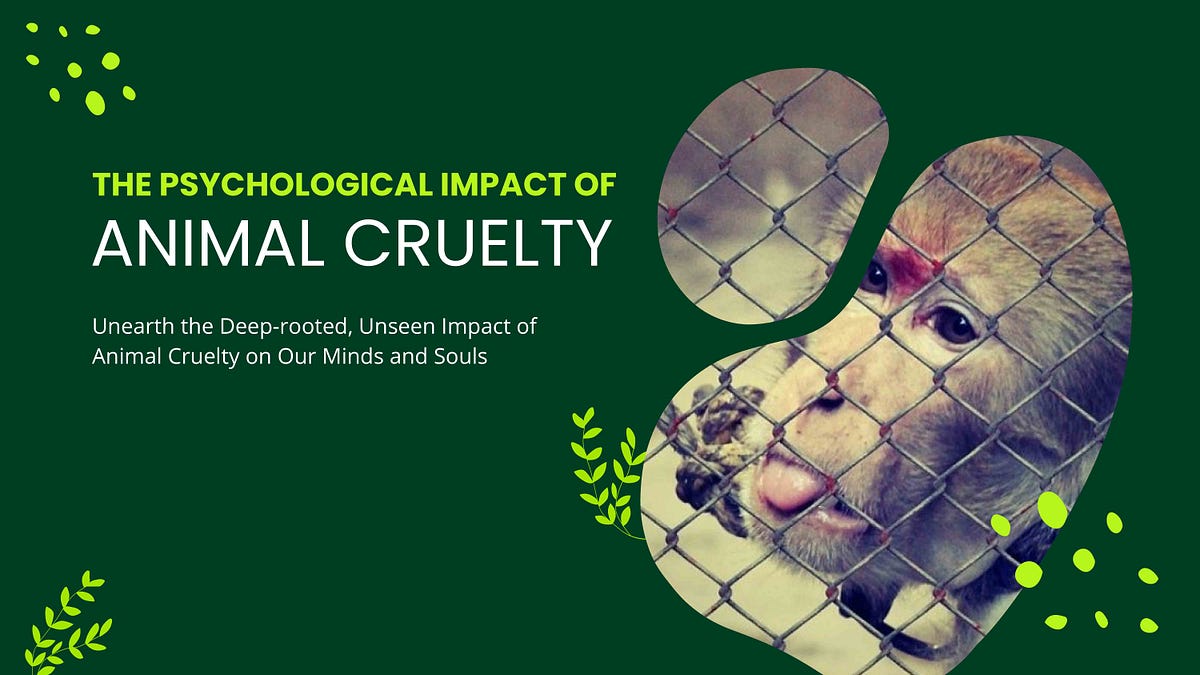The intricate tapestry of human behavior often reveals the most profound philosophical inquiries about the nature of compassion, empathy, and morality. Animal cruelty, a behavior that manifests itself in various forms, has sparked debates among psychologists, sociologists, and ethicists about its underlying motivations. Specifically, the question arises: Is animal cruelty a sign of mental illness? Through the lens of psychology, we delve into this complex issue, examining the relationship between individual psychological profiles and the propensity for cruelty towards animals.
To understand the psychological underpinnings of animal cruelty, one must first grasp the delicate balance of the mind. Picture the mind as an immense garden, wherein thoughts, emotions, and experiences coexist and interact. A flourishing garden nurtures empathy and kindness, while one overshadowed by negativity and turmoil harbors resentment and cruelty. Thus, the act of inflicting suffering upon animals may serve as a reflection of a troubled psyche—an indicator of deeper emotional disturbances. The analogy of the garden serves as a fertile ground for understanding how distressing life experiences can corrupt one’s ability to empathize.
Research indicates that individuals who commit acts of animal cruelty often display various signs of psychological distress. The Diagnostic and Statistical Manual of Mental Disorders (DSM-5) outlines several disorders that may correlate with such behaviors, including conduct disorder and antisocial personality disorder. These conditions are characterized by a pervasive pattern of disregard for the rights of others and a lack of empathy. As society grapples with the implications of these associations, it becomes essential to recognize that not every individual who harms animals is suffering from a mental illness. However, a significant proportion of offenders exhibit markers of serious emotional disturbances, suggesting that cruelty may indeed be symptomatic of an underlying psychological malaise.
The intertwining of childhood experiences and future behavioral patterns further complicates the narrative surrounding animal cruelty. An alarming body of evidence suggests that many individuals who engage in such cruelty often have a history of experiencing or witnessing violence—in households where abuse is prevalent, for instance. The emotional scars left by these experiences can create a vicious cycle, perpetuating a cycle of violence that extends beyond the human realm and ensnares innocent animals. Just as a tree twisted by harsh winds may yield twisted branches, a child exposed to violence may grow into an adult desensitized to suffering. It can be said that the roots of cruelty often lie deep, nourished by trauma and neglect.
Beyond childhood trauma, social and environmental factors also play crucial roles. In a world steeped in disconnection, individuals may become detached from the natural order of life, viewing animals not as companions but as objects devoid of value. This disconnection can be exacerbated by societal normalization of violence—media portrayals, cultural narratives, and even video games often glorify harmful acts without considering their consequences. As a society, when we become immune to violence in all its forms, we risk cultivating a culture in which maltreatment goes unchecked. The landscape of collective consciousness can be as bleak as a dystopian novel, where empathy becomes an echo of the past, drowned out by the cacophony of indifference.
While systematic issues contribute to the prevalence of animal cruelty, the individual psychological perspective merits detailed examination. Many mental health professionals are inclined to argue that, for some individuals, the act of harming animals provides a misguided sense of power or control—an outlet to exert dominance over those perceived as weaker. In this sense, animal cruelty can be viewed as a misguided attempt to achieve a sense of agency amid feelings of helplessness. Like shadows cast in the twilight, these actions emerge from the dark recesses of unmet needs and unresolved conflicts within the individual. For some, the only way to feel a sense of control is to inflict pain upon the most vulnerable beings they encounter.
Furthermore, the insights gleaned from behavioral studies indicate a shared connection between animal cruelty and broader social issues, including domestic violence. The cyclicality of violent behavior often emerges from a singular source: a desire to exert dominance and soothe an inner turmoil. This psychological connection underscores a crucial aspect of preventative measures. By addressing mental health concerns and fostering healthy relationships in early childhood, society can diminish the potential for future cruelty. An integrated approach that encompasses education, mental health support, and community resources can illuminate pathways toward healing and rehabilitation.
Addressing the phenomenon of animal cruelty requires that we do not merely label offenders through the lens of mental illness but also seek to understand the intricate web of psychological, social, and environmental factors contributing to such behaviors. This call for comprehension transcends the simplistic dichotomy of ‘healthy’ vs. ‘unhealthy’ individuals; it demands an appeals for systemic change. Like artists blending colors on a canvas, society must harmonize its efforts—mental health initiatives, educational programs, and legal repercussions—to create a comprehensive response that targets the root causes of animal cruelty.
In conclusion, while animal cruelty can indeed be a manifestation of deeper psychological issues, it is critical to recognize the multifaceted nature of this behavior. Understanding its complexities paves the way for addressing the broader societal factors that contribute to such acts. Ultimately, fostering empathy and compassion should remain at the forefront of this conversation, for in cultivating a society that cherishes all living beings, we lay the groundwork for a future devoid of cruelty, marked instead by kindness and understanding.








